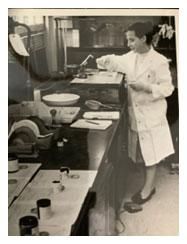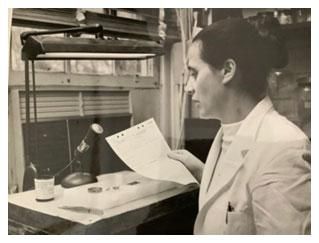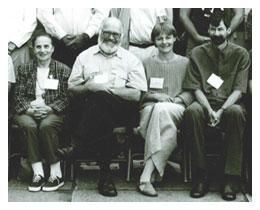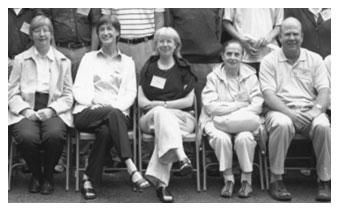It is with great sadness that we are letting you know about the passing of our dear colleague and friend Dr. Maria Spatz, who died on January 27th, 2024 at the age of 99 after a long illness. With Maria’s passing, we have lost a pioneering female scientist in brain barriers research who shaped the present field with her foundational work over many decades during the latter half of the 20th century up until the early 2000s.
Maria had a kind and humble character but also a strong conviction about her research findings, which helped to shape an open and constructive style of communication within our brain barriers community.
Maria was born in Poland and graduated from the Jagiellonian University in Krakow. She received her Medical Degree from Philipps-University in Marburg in 1951. During that time in post-war Germany, she met her husband with whom she then emigrated to the US. After a short stint in the Department of Pathology at the University of Michigan in Ann Arbor, she accepted a position in the Department of Pathology at the NIH. She became one of the first leading women scientists at the NIH where, at that time, the environment was predominantly male-dominated with a frequently dismissive attitude towards women researchers. Collaborating with Igor Klatzo in mid 1970s, Maria significantly contributed to developing a novel concept of vasogenic and cytotoxic brain edema. She was among the first to establish an in vitro model of the BBB, culturing endothelial cells isolated from brain microvessels. Maria’s work also helped the community better understand the transport characteristics and enzymatic activities of the BBB. Her work in the 1990s and early 2000s focused on the effects of vasoactive substances, such as endothelin-1 and endocannabinoids, on the function of brain endothelium. These latter investigations were conducted together with Richard McCarron, with whom she developed a close friendship. Maria also played a role in mentoring scientists who would proceed on to future leadership roles in our field, including the late Dana Stanimirovic, who worked with Maria at the NIH in the early 1990s. Maria’s research resulted in more than 250 original papers and book chapters.
At brain barriers meetings such as the early Gordon Research Conferences (see pictures), Maria was frequently seen among young people sharing her knowledge of the field and its history. She loved conversing with young scientists and was genuinely eager to support them in their professional careers. Her house in Bethesda was always open to provide accommodation for visiting scholars. Maria and her late husband Marek loved hosting parties where you could talk not only about science but also about art and classical music. She will be greatly missed at the professional level as one of the pioneers in the field and at the personal level as she impacted so many lives with her kindness, warmth, and understanding.
Early pictures of Maria taken during her stint at the University of Michigan in Ann Arbor.

Maria at the inaugural 1999 (sitting at left) and 2006 (second from right) ‘Barriers of the CNS’ Gordon Research Conferences.





